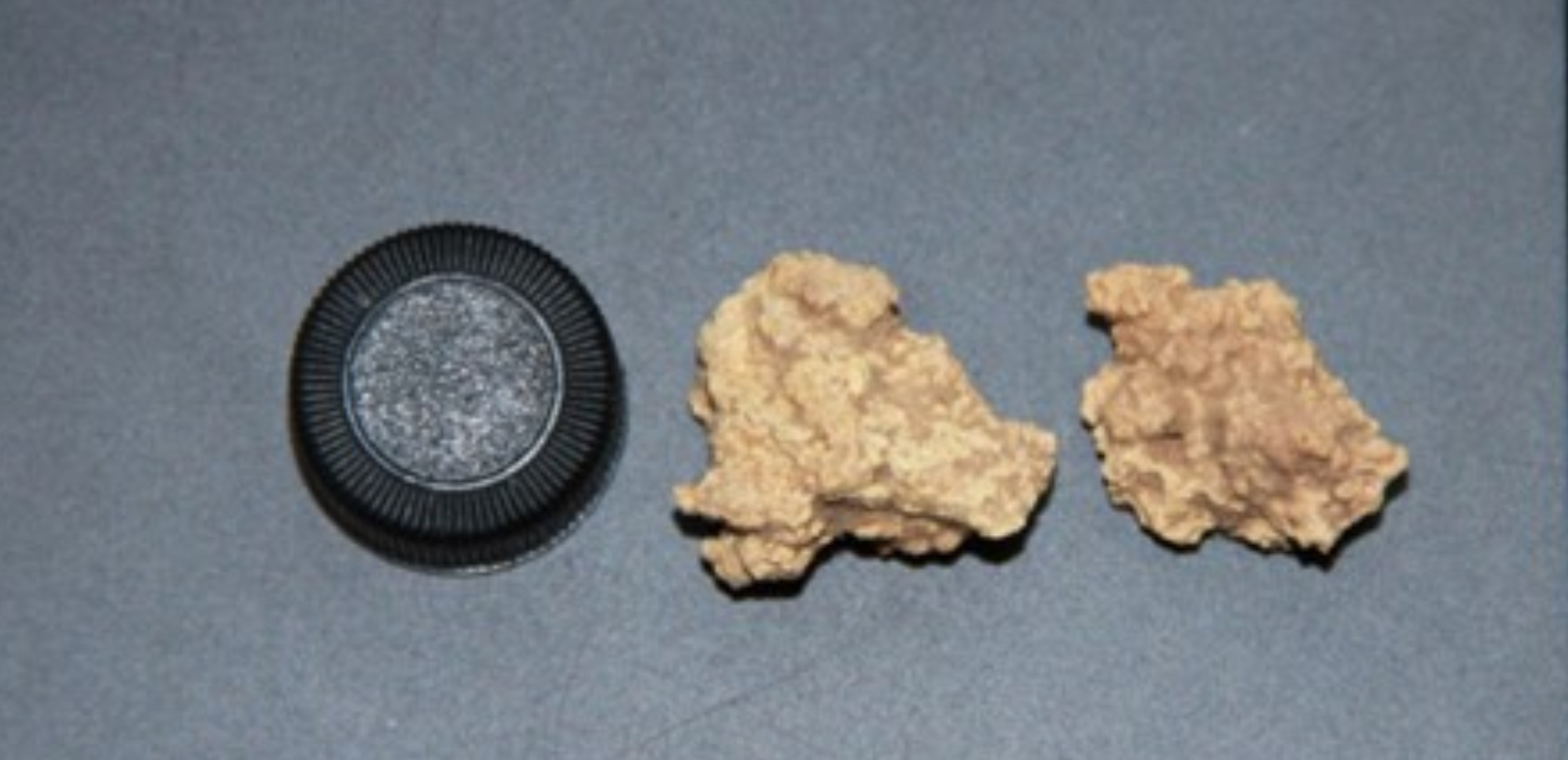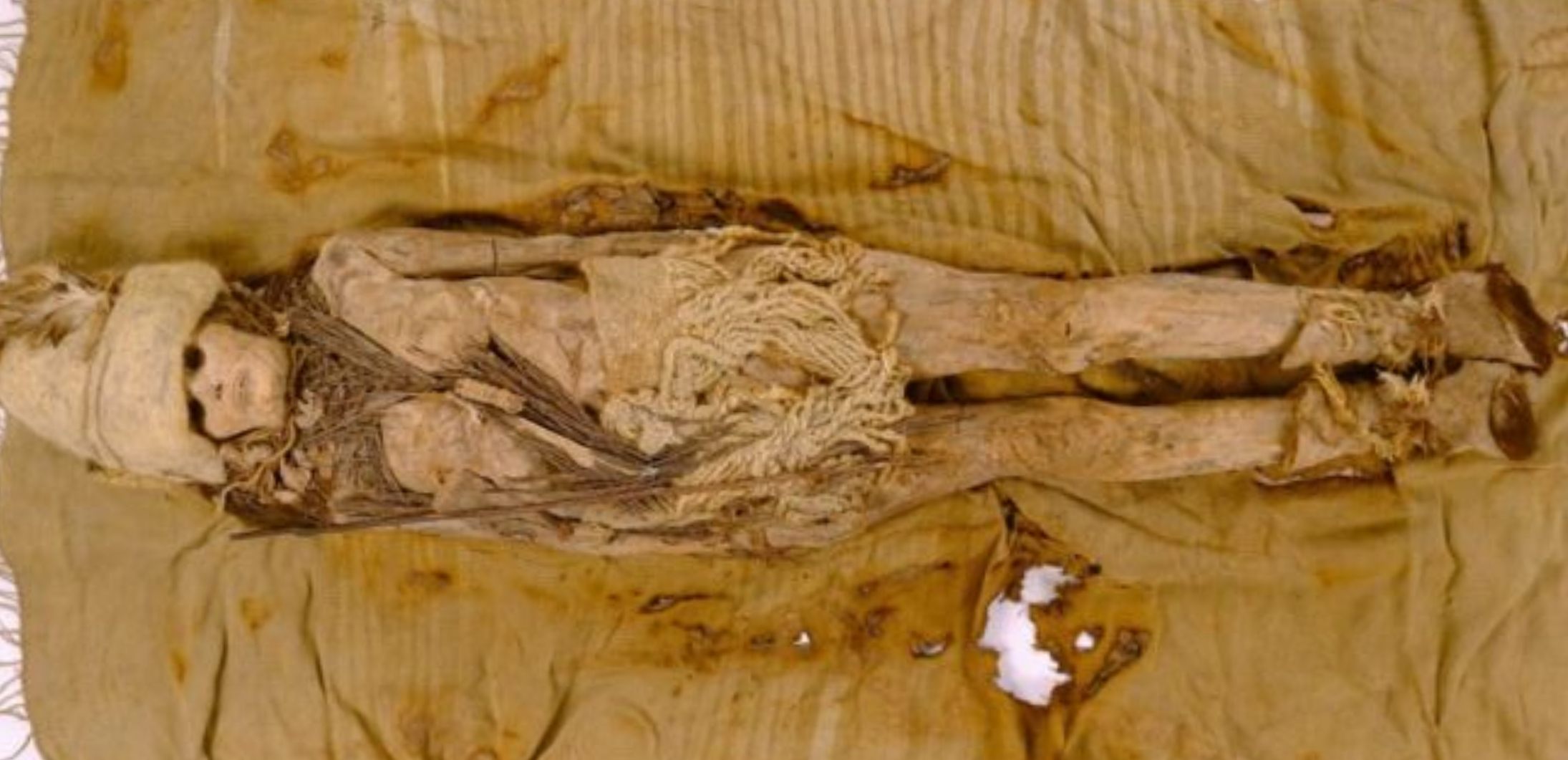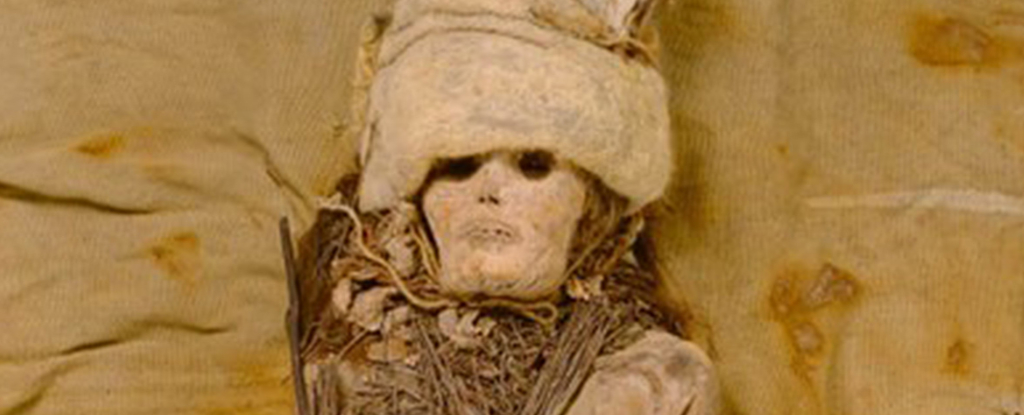Products You May Like
Many of us will have expired foodstuffs sitting forgotten in the back of our fridges and cupboards, but nothing is going to come close to the nearly 3,600-year-old cheese samples discovered clinging to mummified bodies in northwest China.
The human remains were recovered from some of hundreds of coffins found in the Xiaohe Cemetery in China’s Tarim Basin in the 1990s. Smeared across the heads and necks of a number of the mummified corpses was a white material identified previously as cheese.
It’s only now by using the latest in analysis techniques that scientists from the Chinese Academy of Sciences have been able to confirm cow and goat DNA in the Bronze Age substance, and identify it as kefir cheese; a fermented food made with kefir grains and a mix of bacteria and yeast.

“This is the oldest known cheese sample ever discovered in the world,” says paleontologist Qiaomei Fu from the Chinese Academy of Sciences. “Food items like cheese are extremely difficult to preserve over thousands of years, making this a rare and valuable opportunity.”
Further analysis showed the kefir cheese had high levels of the Lactobacillus kefiranofaciens bacteria, indicating these microbes were important in fermenting the kefir. These microorganisms are still used today to produce this type of cheese, with the major strains found in Russia and Tibet.
The researchers were able to link this particular ancient L. kefiranofaciens type to a related strain originating from Tibet, suggesting this is where the bacteria traveled from – and not Russia, as has previously been assumed.
It’s thought that these probiotic kefir grains were used to extend the shelf life of the cheese and to combat lactose intolerance – something that was much more common in the ancient world. This process would’ve made it easier for people to safely digest the milk produced by their livestock.

What’s more, the team notes that the ancient L. kefiranofaciens studied here would’ve been more likely to trigger immune system responses in the human intestine. In other words, this species of bacterium has become more at home with human hosts over time while also improving its capabilities as an agent for fermenting milk.
“This is an unprecedented study, allowing us to observe how a bacterium evolved over the past 3,000 years,” says Fu.
We can trace the consumption of cheese back around 7,000 years, though of course very little evidence remains after all that time. This new study ties in with research from 2014, which suggested the substance was kefir cheese based on the proteins inside it.
The reason behind the cheese’s presence in the graves isn’t clear, but given the food’s place as a delicacy, it’s plausible the small clumps were starter cultures for continuing the cheese’s production in the afterlife.
“Studying the ancient cheese in great detail can help us better understand our ancestors’ diet and culture,” says Fu.
“This is just the beginning, and with this technology, we hope to explore other previously unknown artifacts.”
The research has been published in Cell.
